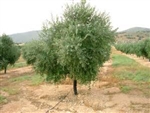
|

|

|

|
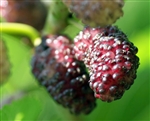
|
|
|
|
|
|
|
|
|
|
Olive Trees-Arbequina 15-20 Feet Black Fruit Chill 300 Zone 7
7 Gal trees can not be shipped must be picked up at nursery
- The olive tree is native to the Mediterranean region and dates back to the beginning of mankind.
- 15-20’ or larger and 12' wide at maturity
- Olive trees have become a universal symbol for health and peace
- Leaves are grayish-green with silvery underside
- Interesting landscape accent tree plus fruit
- Well drained soil
- Chill hours 300, Self pollinating
- Features black fruit that ripens in mid-fall
- We raise these in Starter Plug, 1-Gal, Full Gal, 3-Gal, 5-Gal, and 7-Gal at various times of the year
- Zone 7b Takes down to a 10 degree freeze
|
PAW PAW TREE....Asimina Triloba FRUIT LIKE BANANA Z 2-11
We grow and sell Paw Paw Trees in these sizes: Starter plug, 1-Gal, Full Gal, 3-Gal and 5-Gal at various times of the year.
JUST GOT IN FROM MICHIGAN 100 PAW PAW TREES--MOST ARE IN 3-GAL BUCKETS WHILE SOME WERE LARGE ENOUGH FOR 5-GAL...NONE OF THEM HAVE MUCH OF A ROOT-BALL AT THIS POINT AND WON'T UNTIL NEXT SPRING...ALL ARE LEAFED OUT NICELY AND ANYWHERE FROM 2-3+ FEET INCLUDING LONG TAP ROOT. I WILL SELL THEM BARE ROOT(ONLY TAP ROOT AS THEY CAME TO ME) AT HALF-PRICE UNTIL DECEMBER AT WHICH TIME THE REMAINDER WILL BE AT REGULAR PRICE. EMAIL ME PRIOR TO PURCHASE AND I WILL INVOICE YOU WITH THE 1/2 PRICE AS THE SYSTEM WILL NOT AUTOMATICALLY DO SO.
STILL HAVE (JUST FOUND THEM!) 1-7GAL, AND 3-5GAL LEFT FROM THIS PAST YEAR...ALL CAN BE SHIPPED.
- These Paw Paw came in as seedlings and were set up into 1-Gal buckets in spring of 2013.
- Beautiful unique blooms and interesting fruiting ability.
- The fruit on this tree is very similar to a banana and taste very similar as well.
- The Paw Paw tree falls into several different categories because of its fruit as well as its massive size.
- The Paw Paw tree can reach heights of up to 35 feet and reach spans of up to 30 feet. It provides lots of shade and does well in many different types of soil and areas.
- Zones 2-11
Although better fruiting has been noted in Zones 5 up.
- Chill hours: 400
- Young trees thrive better grown in shade while fruiting is better in full sunlight. One might grown young trees in buckets through a 5-gallon and then plant them in the ground in full sunlight. They both grow and produce better in areas protected from the wind.
- When planting trees, allow 8 feet (2.5m) between them.
- Water newly planted trees
immediately after planting, and as needed throughout the growing season. Pawpaw trees
require adequate soil moisture, especially in the first two years after planting.
- Transplant shock may be reduced by providing temporary partial shade to newly planted
trees.
- Application of a balanced fertilizer (20N-20P-20K) every few weeks during the first
half of the growing season may also improve growth and establishment of young trees.
Pollination: natural and artificial
- Pollination can be a limiting factor in pawpaw fruit set. The flowers are protogynous,
meaning that the stigma (the female receptive organ) ripens before the pollen, and is
no longer receptive when the pollen is shed.
- Thus the flower is designed not to be
self-pollinated. In addition, pawpaw trees are self-incompatible, usually requiring pollen
from a genetically different tree in order to be fertilized.
- Finally, the natural
pollinators of the pawpaw--various species of flies and beetles--are not efficient or
dependable. Although it requires a little extra labor, hand pollination to ensure fruit
set can be well worth the effort and can be done as follows: Using a small, flexible
artist's brush, transfer a quantity of fresh pollen from the anthers of the flower of one
clone to the ripe stigma of the flower of another clone.
- Pollen is ripe when the little
ball of anthers is brown in color, loose and friable; pollen grains appear as yellow dust
on the brush hairs. The stigma is ripe when the tips of the pistils are green and glossy,
and the anther ball is still hard and green. Do not overburden the tree with fruit, as
this will stress the tree, resulting in smaller than normal fruit, and may cause limbs to
break under excessive weight.
-
Plants will be sent bare root for ease in shipping.
- In the fall through winter in extenuating circumstances our plants may arrive without leaves, attached or lose them soon after arrival depending on the amount of stress they are introduced to during shipping!!
- If this occurs please, plant as normal, new leaves will form within a week or two with proper sunlight and water.
|
Morus nigra 'Dwarf Everbearing' Mulberry ZONE 4 Chill hrs 200
- Continuously produces in containers
- Sweet medium sized berry
- Stays small with minor pruning
- Blooms summer for Spring fruiting season
- Self-fertile
- Height: semi dwarf 10-15'
- Full sun
- Food production, Aesthetics, Container or Garden-James and Jellies
- Chill hrs 200
- Zone 4
|

|
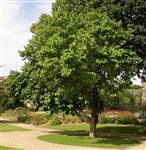
|

|

|

|

|
|
|
|
|
|
|
|
|
FRUITING MULBERRY-Morus rubra Zone 6
- 70 Feet Tall
- Mulberry species are deciduous trees
- Moderately to rapidly growing deciduous tree
- Enjoy fresh fruit and bring beauty and protection to your
landscape
- Varieties are vigorous, productive and hardy
- They are tolerant
of many different kinds of soil and can thrive in a wide range of conditions
- Throughout the summer, these trees will continue to produce unique,
oblong-shaped dark red berries with a sweet flavor that is great for fresh eating or
making jams, wines, cobblers and other desserts
- It makes a great
shade or street tree
- Easily adaptable and easy to grow
- Full sun to semi-shade
- Zone 6
|
JAPANESE LOQUAT-Eriobotrya japonica Chill: LOW Zone 8a
- 10-15 feet tall by 10 feet wide
- Native to China, this evergreen shrub or small
tree has outstanding qualities
- Showy blooms, but although tree is safe to 10 degrees, blooms will freeze at 26 degrees and then not bear fruit
- Fairly pest
resistant Disease resistant
- Sun to shade, drought
tolerant Heat tolerant
- Self-fertile, but as per usual produces more and larger fruit with pollinizer
- The
1- to 2-inch-wide orange, red or yellow loquats are rounded, oval or
pear-shaped with downy or smooth skin
- Zone 8a low chill hours
|
RUSSIAN MULBERRY-Morus Alba 35-80 Feet Zone 5
- 35-80 Feet Tall
- Mulberry species are deciduous broadleaf trees
- Moderately to rapidly growing deciduous tree
- Enjoy fresh fruit and bring beauty and protection to your
landscape
- Varieties are vigorous, productive and hardy
- They are tolerant
of many different kinds of soil and can thrive in a wide range of conditions
- Throughout the summer, these trees will continue to produce unique,
oblong-shaped dark red berries with a sweet flavor that is great for fresh eating or
making jams, wines, cobblers and other desserts
- It makes a great
shade or street tree
- Easily adaptable and easy to grow
- Full sun to semi-shade
- Zone 6
|

|
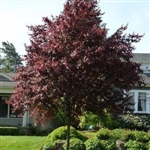
|

|
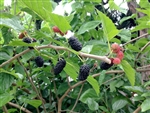
|

|
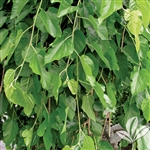
|
|
|
|
|
|
|
|
|
Thundercloud Purple Leaf Plum-Prunus cerasifera 'Thundercloud' Z 4
- 15-20 foot wide and tall
- A stunning landscape specimen with splendid coppery purple foliage that holds its color into fall
- Attracts
Birds, Insect Resistant
- Disease
Resistant, Mildew Resistant, Needs No Deadheading, Pollution Tolerant, Rust
Resistant
- Blooms pale pink, single blooms that blanket the stems in the spring before the foliage emerges
- Produces edible fruit
- Self-pollinating
- Deciduous
- Landscaping: lawn, patio in containers, and terrace
- Origin was in Persia and brought to France in 1880, then developed in California in 1919 by Luther Burbank
- New growth is reddish, maturing to dark green, rounded canopy with age
- Zone 4
|
FRUITING MULBERRY Morus ZONE 6 Chill hrs 200
- Continuously produces in containers
- Sweet medium sized berry
- Maroon to Black fruit
- Blooms summer for Spring fruiting season
- Self-fertile
- Height: 30+ feet
- Full sun
- Food production, Aesthetics, Container or Garden-James and Jellies, eating
- Chill hrs 200
- Zone 6
|
FRUITLESS MULBERRY MORUS ALBA ZONE 4- Height: 30+ feet
- Full sun
- Known also as White Mulberry
- Native to China and India
- Used to produce leaves for silkworms and for livestock feed
- SHADE LARGE SIZE FAST GROWING TREE
- Sap poisonous to dogs
- Humans can be allergic to pollen
- Zone 4
|

|

|

|

|

|
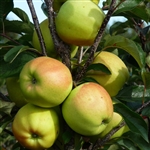
|
|
|
|
|
|
|
|
|
Chinese pistache, Pistacia chinensis small to med size tree Zone 6
- I a small to medium size tree native to central and western China,
- Planted as street tree in temperate zones
- Attractive fruit and foliage
- Separate male and female trees
- Zone 6
|
DWARF POMEGRANATE-‘Punica granatum Nana’ Zone 9+
Zones: 9 -
10 (50 degrees F.).
Height: 2 feet.
Shade Requirement: Sunny windowsill.
Comments: Easy to grow. Its compact
habit lends itself to windowsill culture or bonsai training. Minimum
temperature of 40 degrees F. in winter. Fruit is edible. Tolerates drought once
established. Gorgeous rich coral-red blooms, jeweled toned fruit, every bit as
delicious as larger varieties. In warmer climates it can be grown outside, in
cooler areas, bring indoors for the winter. Funnel-shaped flowers will attract
hummingbirds and butterflies.
|
Yellow (Golden) Delicious Apple- Malus domestica Zone 5-8 600-700 Chill Hrs
- Sweet flavored fruit ripens Mid-Sept/Oct.
- Self-Fruitful, but always better to cross-pollinate: Gala or Winesap
- Excellent pollinator for other Apple trees
- 15-20 Feet at maturity
- Chill hrs 600
- Zone 5
|

|

|

|
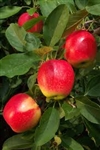
|

|
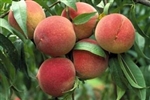
|
|
|
|
|
|
|
|
|
Dorsett Golden Apple Tree-Malus domestica Zone 5-9 Chill Hrs: 100-250. NEEDS POLLENIZER....
- Fruit Mid-Jun/Jul
- Good pollinator for other apples
- 10-20 Feet at maturity
- Needs pollinator: Gala, Anna
- Will produce in year 3-4
- Chill hrs 100-250
- Zone 5
|
Gala Apple--Malus domestica USDA Zones 5-10 Chill: 500 hrs
- Harvest August-September.
- 15-20 Feet tall at maturity
- The Royal Gala strain was named to honor Queen
Elizabeth II
- Gala ranks 2nd in the list of top ten apple
varieties grown in the U.S., trailing only Red Delicious.
- Pollenizer required
- Chill hrs 500
- Zone 5
|
Elberta Peach-Prunus persica USDA Zones 5-9 Chill: 800 hrs
- Medium to large, yellow fleshed fruit, freestone
- Most popular of all peaches
- Sweet in taste for eating, canning, and freezing
- Late May ripening each year
- Self-pollinating, but always better to cross-pollinate
- Chill hrs 800
- We grow these in 5 gal and 7 gal buckets
- 15-20 feet at maturity
- Zone 5
|

|

|

|
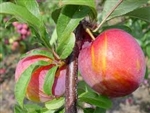
|

|

|
|
|
|
|
|
|
|
|
SANTA ROSA PLUM TREE-Prunus salicina Zones 5 Chill: 400 hrs
Can only ship up to 5-gal.
- Good pollinator for other plums
- Favorite of home gardners
- Harvest late July
- 15-25 feet at maturity
- Fragrant pink and white blossoms
- Self-pollinating
- Chill hrs 400
- Zone 5
|
PLUM TREE BURBANK-Prunus salicina Zones 5-9 Chill: 400 hrs
5-GAL AND 7-GAL MUST PICK UP AT NURSERY...TOO BIG TO SHIP
- Favorite of commercial growers
- 10-15 feet tall and 15-25 feet wide at maturity
- Purplish-red plum with sweet yellow pulp
- Harvest in late summer
- Needs pollinator: Methley
- Chill hrs 400
- Zone 5
|
NECTARINE TREE 'SUNDOLLAR'--Prunus salicina Zones 5 Chill: 400
- Medium to large, yellow fleshed fruit, semi-clingstone
- Sweet in taste
- One of the first to ripen each year
- Self-pollinating, but always better to cross-pollinate
- Chill hrs 400
- Zone 5
.
|

|

|

|

|

|
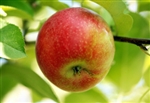
|
|
|
|
|
|
|
|
|
PEAR BARTLETT PEAR TREE— Pyrus communis Zone 4 Chill Hrs 350
- World's most popular pear
- 10-15 feet tall at maturity
- Fruit early to mid-season
- Self-fruitful but produces better using
pollinator: Moonglow or Keiffer
- Ornamental Fragrant White blossoms attract butterflies,
bees, and hummingbirds
- Deciduous in winter
- Chill hours 350-450
- Zone 4
|
Musa 'Truly Tiny'Compact with Edible Fruit Zone 9
- Musa 'Truly Tiny' is the smallest
edible fruit producing banana in the world.
- 'Truly Tiny' banana is a commercial
growers dream crop. It will not strech or take over your benches.
- It stays very
compact without PGRs, and will be a uniform bench run crop.
- Truly Tiny is a
built for the mass market.
- Extremely
Dwarf Banana
- Red
Variegation
- Produces
Edible Bananas
|
Anna Apple--Malus domestica Zones 5-9 Chill: 100-300 hrs
- Large sweet crisp fruit with a skin of greenish-yellow and red blush
- Eating, cooking and baking
- Produces at an early age
- Self-fertile however a pollenizer like Dorsett Golden with increase production
- 20-30 feet at maturity
- Chill hrs 100-300
- Zone 5
|

|
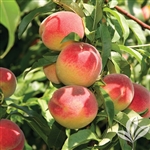
|

|

|

|
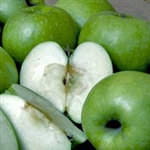
|
|
|
|
|
|
|
|
|
La Feliciana Peach-Prunus persica USDA Zones 8 Chill: 400 hrs
5 Gal AND 7 GAL CAN BE SHIPPED
- Medium to large, yellow fleshed fruit, semi-freestone
- Sweet in taste, melting flesh
- Developed by U. of Florida
- Great for North Florida and Atlantic and Gulf Coast, Great for Texas Louisiana in Zone 8
- Late June to July ripening each year
- Self-pollinating, but always better to cross-pollinate
- Chill hrs 400-550
- Zone 8
|
Southern Belle Plum- Prunus salicina ‘Southern Belle’ ZONE 5 CHILL: 250
Larger than 4 feet must be picked up at nursery--cannot be shipped
· Good sized red to purple skinned
plum
· Prunus salicina ‘Southern Belle’
· Firm yellow flesh sweet flavor
· Excellent eating or processing
|
GRANNY SMITH APPLE TREE-Malus domestica 'Granny Smith' Needs Pollinator Zone 5 Chill hrs 400
Larger than 4 feet must be picked up at nursery--cannot be shipped
- Produces high-quality, tart apples on a reliable tree
- For cooking and table
- Green skin white flesh, occasionally with a subtle, pink blush
- High acid content won't go brown as quickly
- Harvest in October or early November
- Full of vitamins and antioxidants, but not calories
- Up to 14 feet tall at maturity
- Heat tolerant long lived tree
- Needs pollinator, Gala or Dorsett Golden
- Chill 400
- Zone 5
|

|
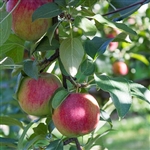
|

|
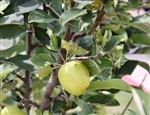
|

|
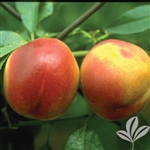
|
|
|
|
|
|
|
|
|
|
PINK LADY APPLE TREE-Malus domestica 'PINK LADY' Needs Pollinator Zone 5
Larger than 4 feet must be picked up at nursery--cannot be shipped
The
first bite is tart, followed by just the right amount of sweet.For cooking and tableRich yellow skin blushed with pinkA divine dessert appleHarvest in late October
Full of vitamins and antioxidants, but not caloriesUp to 12-15 feet tall at maturityHeat tolerant long lived tree
Needs pollinator, Gala or Granny Smith
Chill 200
Zone 5
|
EIN SHEIMER APPLE TREE-Malus domestica 'EIN SHEIMER' Needs Pollinator Zone 8
Larger than 4 feet must be picked up at nursery--cannot be shipped
- Produces high-quality, tart apples on a reliable tree
- Developed by Dr. Ein Sheimer in Israel
- Great for hot climates along Atlantic and Gulf Coasts even into Florida
- For cooking and table
- Greenish yellow skin similar to Golden Delicious with more tart flavor
- High acid content won't go brown as quickly
- Flowers in Feb-Mar, Harvest in June
- Full of vitamins and antioxidants, but not calories
- Up to 20-30 feet tall at maturity
- Heat tolerant long lived tree
- Needs pollinator, Gala or Anna
- Chill 250
- Zone 8
|
Karla Rose Nectarine- Prunus persica nucipersica Karla
Rose Self-pollinating Zone 7b
Larger than 4 feet must be picked up at nursery--cannot be shipped
- White flesh freestone with deep red skin
- Low acid
- Semi-freestone
- Good for fresh eating
- Prunus persica nucipersica 'Karla Rose'
- Harvest in June
- Full of vitamins and antioxidants, but not calories
- Up to 10-15 feet tall at maturity
- Self-pollinating
- Chill 500
- Zone 7b
|

|
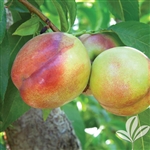
|

|
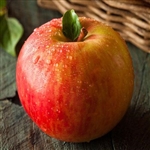
|

|

|
|
|
|
|
|
|
|
|
|
EARLY KING Nectarine-Prunus persica nucipersica Early King’ Self-pollinating Zone 7a
Larger than 4 feet must be picked up at nursery--cannot be shipped
- Yellow flesh juicy freestone with reddish orange skin
- Low acid
- Semi-freestone
- Good for fresh eating
- Prunus persica nucipersica 'Early King'
- Harvest in July
- Full of vitamins and antioxidants, but not calories
- Up to 10-15 feet tall at maturity
- Self-pollinating
- Chill 400
- Zone 7a
|
APPLE FUJI APPLE TREE-Malus domestica Needs Pollinator Zone 6 Chill 2-400 hrs
Larger than 4 feet must be picked up at nursery--cannot be shipped
- Produces high-quality,sweet crisp apples on a reliable tree
- Red Fujis are America's top choice for apples in supermarkets
- Great for hot climates along Atlantic and Gulf Coasts even into Florida
- For cooking and table
- Red skin
- Flowers in Feb-Mar, Harvest in Sept-October
- Full of vitamins and antioxidants, but not calories
- Up to 10-15 feet tall 8-10 wide at maturity
- Heat tolerant long lived tree
- Needs pollinator, Gala or Anna
- Chill 200-400
- Zone 6-9
|
SCARLET BEAUTY PLUM- Prunus salicina ‘Scarlet Beauty’ ZONE 8-9 CHILL: 150
Larger than 4 feet must be picked up at nursery--cannot be shipped
- A very low chill Japanese-style plum excellent
flavor
- Needs
only 150 chill hours
- Developed by the nurseryman and plant breeder Ronald Lambert of
Wachula, FL, a close friend of Dr. Dunstan
- Scarlet Beauty is a medium sized red skinned, red streaked amber fleshed
plum
- Self fertile
- Zone 8-9
|

|